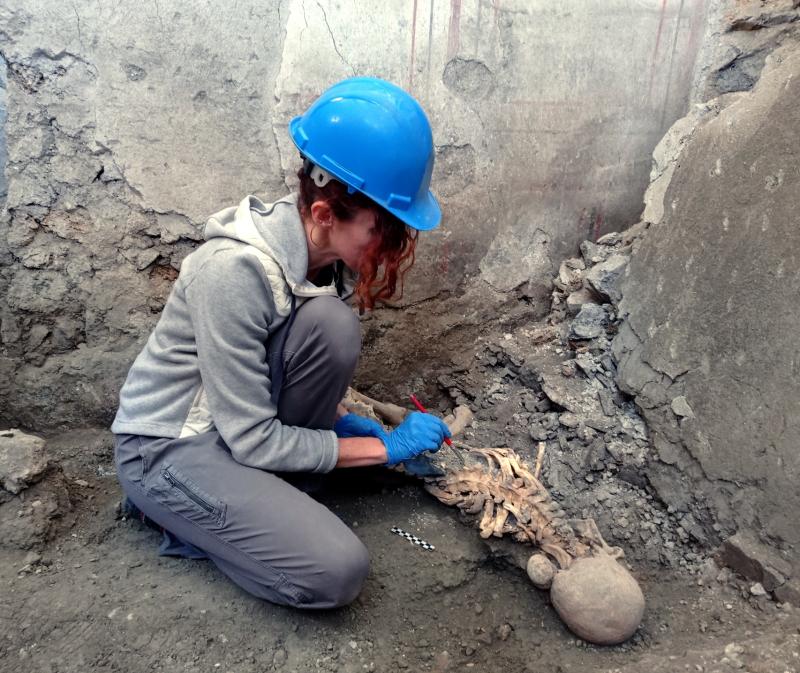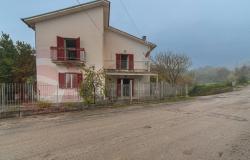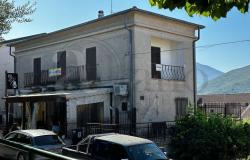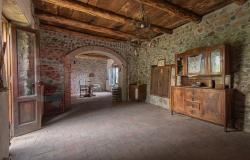Archaeologists uncovered a pair of skeletons during recent excavations and security work on the Insula of the Chaste Lovers, a section of the ancient city of Pompeii comprising several houses and a bakery.
The skeletons, which were both discovered lying on their sides under a collapsed wall in an area domus, are believed to be the remains of Pompeian citizens who died during an earthquake that occurred alongside the eruption of Mount Vesuvius in 79 CE. It appears that the individuals took refuge in an unused service room of the house, which was likely undergoing renovations or repairs at the time of their deaths.
An initial analysis of the skeletons indicated that the individuals were likely both men and at least 55 years old, and probably died from multiple traumas caused by the wall cave-in.
The collapse seems to have occurred during the final phase of lapilli (volcanic fragments) sedimentation resulting from the eruption of Mount Vesuvius, yet prior to the arrival of pyroclastic currents that left ancient Pompeii completely buried under a blanket of pumice and ash.
“This is us”
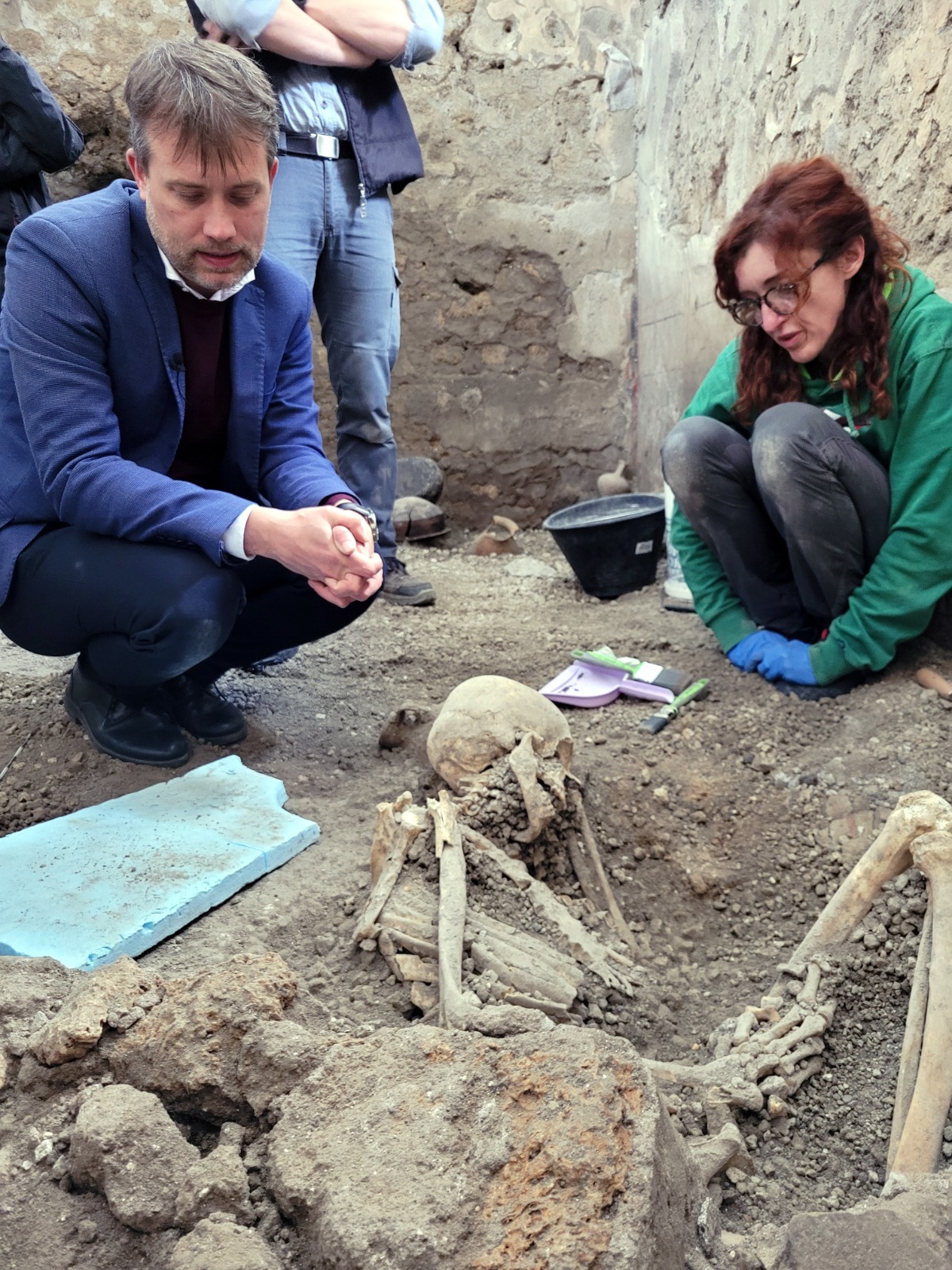
The discovery of these victims — in a part of the ancient city that had been worked on to some degree, but was still relatively under-explored — offers new evidence to support the fact that pyroclastic currents and lapilli accumulation amid the Vesuvius eruption were not the only dangers posed to citizens in ancient Pompeii. Over recent decades, experts have increasingly gained insight into the earthquakes and building collapses that accompanied the eruption.
“With analysis and methodologies we are able to get closer to the last moments of those who lost their lives,” said Gabriel Zuchtriegel, the director of the Archaeological Park of Pompeii.
During the removal of the cervical vertebrae and the skull of one of the two skeletons, scientists found traces of organic material that was most likely a cloth bundle. In addition, the team unearthed five glass beads from a necklace, along with six coins, some of which date back to the middle of the 2nd century BCE.
Other objects found in the same room as the skeletons include a vertical Greek amphora (jar), and a collection of vases, bowls and jugs.
Director Zuchtriegel noted that during a worksite conversation, one archaeologist pointed to one of the two victims the team was uncovering and declared, “This is us!,” which left an impression on him. “It summarizes the story of Pompeii perfectly,” Zuchtriegel said. “In Pompeii, in fact, the advancement of techniques never allows us to forget the human dimension of the tragedy. Rather, it makes us see it more clearly.”
If you go
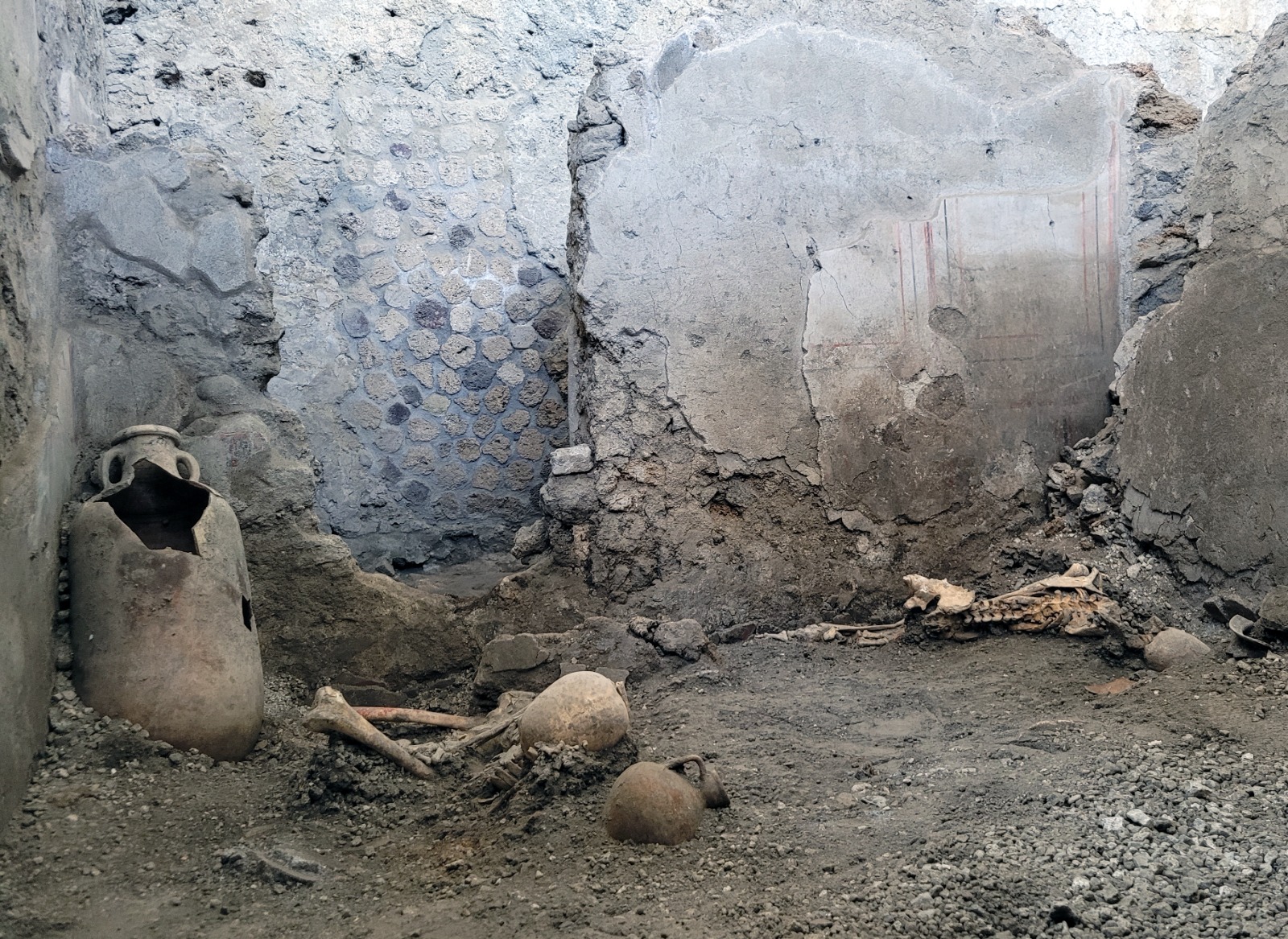
Archaeological Park of Pompeii
Metropolitan city of Naples
Website
